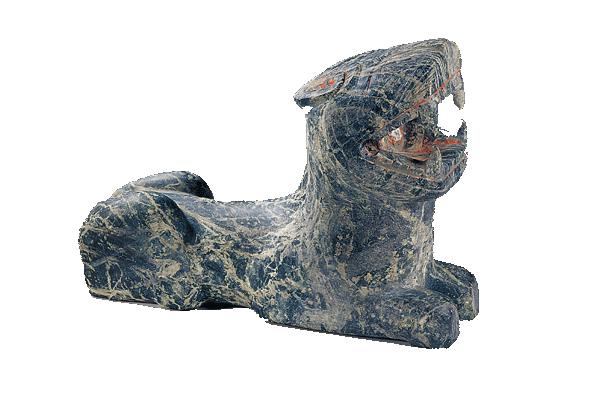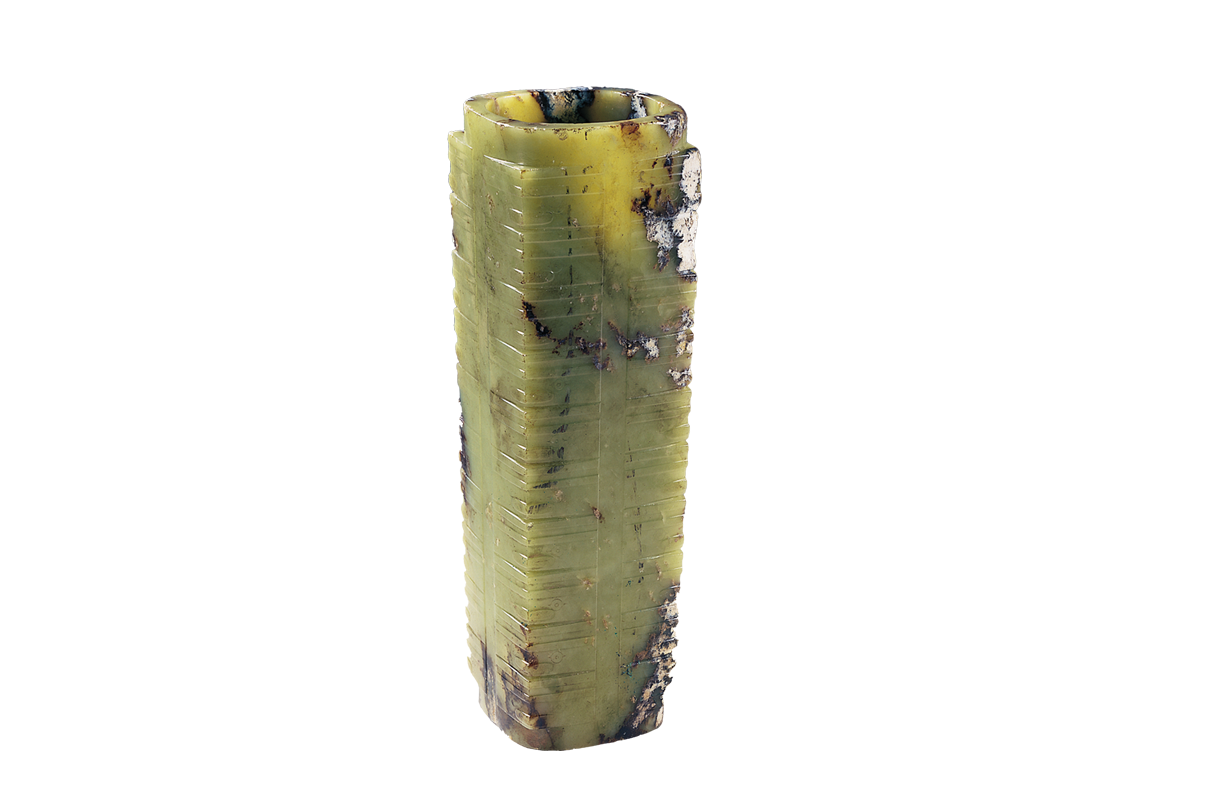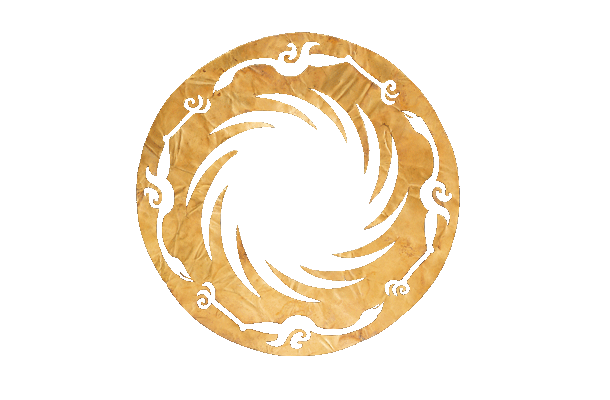 VISIT
VISIT
The museum opens from 9:00am to 6:00pm everyday (last admission at 5:00pm);
Closed on Mondays except for January, Feburary, July, August, and statutory holidays.
 COLLECTIONS
COLLECTIONS

Wi. 5.5, Dp. 0.46 cm
This piece of hopfnerite and nephrite is opaque and made of grayish black jade. Affected by the buried condition, the jade has lots of black and white stains left by permeation on its surface. This plaque has a square shape with round angels as well as a deformed insect pattern of smooth raised lines on one side was carved in bas-relief, representing the superb craftsmanship.

Wi. 8.94, Ht. 28.4 cm
The crouching stone tiger seems fierce, powerful, and full of vigor. There is no doubt that the stone tiger carved by the circular engraving skill are the influential works of art in the Shang and Zhou dynasties. Altogether ten round sculptures of stone lying tigers have been unearthed in Jinsha. This stone tiger has ash black color with white grayish black spots and veins of the rock aptly used to represent the spots on the tiger’s skin. Its forelimbs stretching and legs bending forward, the stone tiger has a raised head and a wide-open mouth revealing four canine teeth.

Wi. 6.9, Ht. 22.2 cm
The cuboid is made of translucent green jade. The profile is rectangular prism, and its upper part is larger that the lower part and its surface have 10 nodes and grooves. On every corner of the nodes is a simplified human face: round eyes, broad nose, and narrow mouth. On the upper part of one side was carved a human–shape sign. The entire object showed fine craftwork with the feature of well-polishing from inner part to the outside, and the quality of jade is smooth. This jade cuboid is identical with jade cuboids of the late period of Liangzhu culture in structure, pattern and workmanship.

Wi. 12.5, Dp. 0.02 cm
It has a round figure, the pattern design is arranged respectively inside and outside with hollow-out expression. The inside pattern includes 12 equidistant arc tooth-like asterisms which are inclined clockwise. And the outside pattern consists of four equidistant birds. All birds are chin-up with stretched legs and flying pose in a direction contrary to the inner circle rotating direction. With its meaningful look and feel, precise structural composition, beautifully flowing patterns together with rich rhythm. It condensed ancient peoples’ profound philosophical and religious thinking, endless imagination, extraordinary artistic creativity and exquisite craftworks. On August 16, 2005, the Sun and Immortal Bird pattern was selected as the logo for Chinese cultural heritage.

 Calendar
Calendar
Cultural EventsEducational ProgramsClosing Day
 NEWS
NEWS

· The Academic Exchange Event "Accessibility to All: Inclusive Construction in the Display and Utilization of Archaeological Sites" Was Successfully Hel
2025/10/27· Approximately 120,000 Visitors Attended the National Day Events in Jinsha Site
2025/10/10· A touch of cyan ushers in summer! The 'Cyan·Aesthetic' special exhibition debuts today at the Jinsha Site Museum.
2025/07/16· Cultural and Natural Heritage Day at Jinsha Site Museum: A Dazzling Array of Activities!
2025/06/13· The exhibition "Light of the Sun — Ancient Shu Civilization and the World" opens at the United Nations Headquarters in New York, USA.
2025/06/09· Intangible Heritage Meets Ancient Shu: Jinsha Site Museum’s Spectacular Dragon Boat Festival
2025/05/31